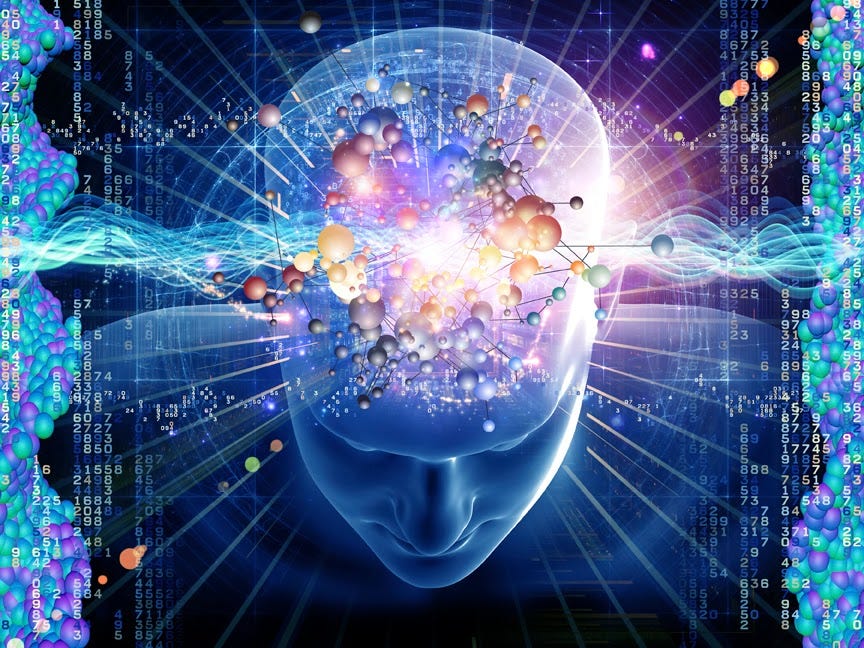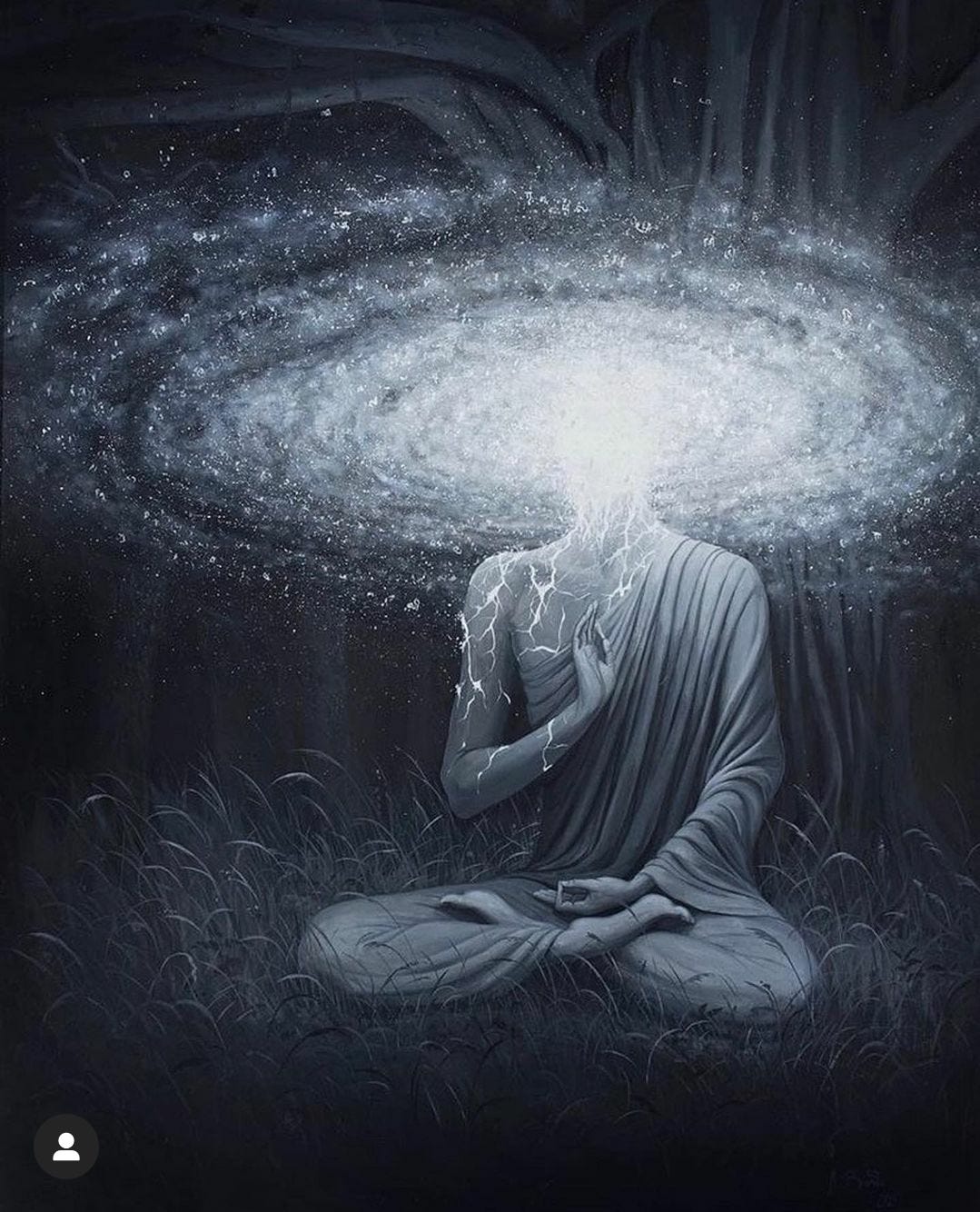What if the way we think about peace could physically shape our world?
Quantum physics, the science of the subatomic, suggests this isn’t as far-fetched as it sounds. In the double-slit experiment, particles shift behavior when observed, hinting that consciousness influences reality.1
Ancient wisdom, like the Hermetic principles in The Kybalion, echoes this: thoughts are vibrational forces, molding existence’s fabric.2 Yet, in striving for a better world, we often resist war rather than create peace - a subtle, profound misstep.
A pro-peace mindset, unlike anti-war’s dissonance, aligns with quantum insights and metaphysical truths, forging a path to collective harmony. By exploring where physics and wisdom converge, we uncover a universe where intention shapes reality, inviting us to choose differently.
Quantum Physics Meets Hermetic Wisdom
In The Dancing Wu Li Masters, Gary Zukav portrays quantum physics as a cosmic dance, where particles aren’t solid but vibrating fields, interwoven across vast distances.3
This mirrors the Hermetic Law of Vibration from The Kybalion: everything (matter, thought, emotion) pulses as energy, resonating at unique frequencies. Quantum experiments, like the observer effect, reveal that measuring a particle alters its state, suggesting consciousness shapes reality.4
Physicist David Bohm’s implicate order theory deepens this, envisioning a holistic universe where mind and matter entwine, like waves in a cosmic ocean.5
The Law of Polarity adds clarity: opposites, like war and peace, are poles of one spectrum. Focusing on anti-war resistance amplifies war’s frequency, much like observing a particle fixes its state. Pro-peace, however, tunes our mental energy to harmony, aligning with quantum coherence - constructive wave patterns that amplify outcomes.6
These parallels with metaphysical teachings suggest a universe where thought directs energy.
Pro-Peace vs. Anti-War Through a Scientific Lens
What does it mean to vibrate with peace rather than resist war?
Quantum physics illuminates a universe where intention shapes reality. John Bell’s theorem on entanglement proves that particles, once linked, influence each other instantly, defying space and time, a cosmic dance of interconnectedness.7
If thoughts, as David Bohm’s implicate order suggests, are energetic patterns woven into this universal tapestry, a collective pro-peace focus might “entangle” human consciousness, harmonizing our shared vibration.
Anti-war activism, though noble, often pulses with anger or fear, emotions that HeartMath Institute’s research shows disrupt heart rate variability (HRV), a biomarker of stress.8 These dissonant waves, akin to interference patterns in quantum scattering experiments, amplify conflict’s frequency, fragmenting unity.9
HeartMath’s decades-long studies explore how emotions shape physiology through HRV, the rhythmic variation between heartbeats. Negative emotions like fear, common in anti-war resistance, create erratic HRV patterns, signaling incoherence between the heart, brain, and nervous systems.10
A 2014 study in Frontiers in Psychology found that such incoherence impairs emotional regulation, mirroring quantum systems where misaligned waves cancel each other out. Conversely, pro-peace emotions, like gratitude or calm focus, foster physiological coherence, where heart and brain synchronize in smooth, sinusoidal HRV patterns, enhancing clarity and stability.11
HeartMath’s 2015 Science of the Heart reports that coherent states boost resilience, akin to quantum coherence amplifying outcomes, like laser light versus scattered beams.
A 2012 study in Global Advances in Health and Medicine suggests coherent states may influence Earth’s magnetic field, hinting that collective pro-peace emotions could ripple globally, like entangled particles.12 While speculative, this aligns with a 2018 study showing group coherence, via heart-focused meditations, enhances social connection and reduces stress, echoing the collective pro-peace’s unifying power.13
As the metaphysical and esoteric teachings were once scoffed at and disregarded, the evolution of scientific understanding based upon physics invites us to rethink our approach.
The Secret’s Insights and Materialistic Missteps
In 2006, The Secret swept the world with its seductive message: thoughts shape reality, mirroring the observer effect in quantum physics, where awareness alters outcomes.14 Only, the message was pervverted by a focus on materialism…
Honed by years of seeking, one saw through the distortion. Intention is everything. Materialistic pursuits should not take precedence over manifesting a better world for us all. Montalk’s piercing critique of “You Create Your Own Reality” (YCYOR) echoes this, warning that such service-to-self (STS) pursuits risk spiritual snares, siphoning freewill for fleeting rewards.15
Still, The Secret’s core truth (thought’s transformative power) holds promise when woven with a vibrant vision in the spirit of service to others.
Pro-peace sentiment, unlike the discordant din on an anti-war stance, channels this power into collective harmony. I’ve long envisioned peace rippling outward, a cosmic crescendo of care.
“All is one, and that one is love/light, light/love, the Infinite Creator, vibrating in unity through every act of service.”
~ The Law of One: Book I
The Law of One and Quantum Unity
The Law of One posits that all is one, a unity echoing quantum entanglement, where particles share connections across vast distances.16 John Bell’s experiments confirm this quantum action, hinting at deeper interconnectedness.17
The Law of One’s service-to-others (STO) path aligns with this, suggesting collective positive intention squares energy exponentially, like a laser’s focused beam versus scattered light.
Studies on group meditation, like the Maharishi Effect, show reduced crime rates in cities with mass meditation, offering empirical support for the collective consciousness’s impact.18 In contrast, service-to-self (STS) (as in The Secret’s materialism) fragments this unity, diluting manifestation’s power. A pro-peace mindset, rooted in STO, leverages this squaring effect: the more we visualize harmony together, the stronger the outcome. Quantum physics and metaphysics converge, suggesting united thoughts could reshape reality. What might happen if we tuned to this frequency?
Practical Steps for a Pro-Peace Mindset
How do we live pro-peace in a world of conflict?
Start with the mind. Neuroplasticity research shows focused visualization reshapes brain patterns, supporting practices like meditating on global harmony (picture a healed community, five minutes daily).19
Focus on speech. Linguistic psychology highlights framing’s power… Be sure to say “pro-peace” instead of “anti-war,” as studies show positive language boosts optimism.20
Collectively, join pro-peace initiatives (eg, art projects, dialogues, global meditations, etc.) backed by social psychology’s findings on group cohesion.21
Network theory suggests ideas spread like contagions; sharing pro-peace posts online amplifies impact.22
How can your success uplift all? Quantum coherence and Hermetic vibration meet here, grounded in science and action. Experiment with these steps, and peace may become a frequency we share.
“Positive framing shapes our minds, fostering optimism that ripples through networks, transforming collective consciousness.”
~ Kahneman and Tversky
Envisioning the Future We Want
In a universe of entangled energies, choosing pro-peace over anti-war isn’t just philosophical, it’s practical. Quantum physics, from Bohm’s implicate order to Bell’s entanglement, suggests consciousness shapes reality, paralleling The Kybalion’s vibrational wisdom and the Law of One’s unity. By rejecting The Secret’s materialistic tilt and embracing service-to-others, we amplify peace’s frequency, creating abundance for all.
Visualize harmony, resonate in a vibrational frequency of goodwill and peace toward all upon earth, join a pro-peace effort, or read the studies and books cited in footnotes, such as The Dancing Wu Li Masters, or the work of HeartMath, to explore the bridge between science and spirituality, absorb these concepts, and incorporate them into your thoughts.
Share your experiences - your thoughts might entangle with others to spark change. In a world of waves and frequencies, peace isn’t a destination; it’s a vibration we co-create.
Like my content?
Support my work with Ko-Fi
FOOTNOTES:
Thomas Young, “The Bakerian Lecture: On the Theory of Light and Colours,” Philosophical Transactions of the Royal Society 92 (1802): 12–48.
Three Initiates, The Kybalion: A Study of the Hermetic Philosophy of Ancient Egypt and Greece (Chicago: Yogi Publication Society, 1908) 26.
Gary Zukav, The Dancing Wu Li Masters: An Overview of the New Physics (New York: William Morrow & Co., 1979), 88.
Alain Aspect, Jean Dalibard, and Gérard Roger, “Experimental Test of Bell's Inequalities Using Time-Varying Analyzers,” Physical Review Letters 49, no. 25 (1982): 1804–1807.
David Bohm, Wholeness and the Implicate Order (London: Routledge, 1980), 42. (Read Wise Insights forum book overview: “Wholeness and the Implicate Order’ by David Bohm – A masterpiece of thinking”)
Yakir Aharonov and David Bohm, “Significance of Electromagnetic Potentials in the Quantum Theory,” Physical Review 115, no. 3 (1959): 485–491
John S. Bell, “On the Einstein Podolsky Rosen Paradox,” Physics Physique Fizika 1, no. 3 (1964): 195–200.
Rollin McCraty et al., “Heart Rate Variability: New Perspectives on Physiological Mechanisms, Assessment of Self-regulatory Capacity, and Health Risk,” Global Advances in Health and Medicine 4, no. 1 (2015): 46–61.
B. E. A. Saleh and M. C. Teich, Fundamentals of Photonics (New York: Wiley, 1991), 123.
Rollin McCraty and Maria A. Zayas, “Cardiac Coherence, Self-Regulation, Autonomic Stability, and Psychosocial Well-Being,” Frontiers in Psychology 5 (2014): 1090.
Rollin McCraty, “The Science of the Heart: Exploring the Role of the Heart in Human Performance,” HeartMath Institute, 2015.
Rollin McCraty et al., “The Global Coherence Initiative: Creating a Coherent Planetary Standing Wave,” Global Advances in Health and Medicine 1, no. 1 (2012): 64–77.
Rollin McCraty, “The Science of Interconnectivity: Exploring the Human-Earth Connection,” HeartMath Research Center, 2016.
Rhonda Byrne, The Secret (Atria Books/Beyond Words, 2006), 27.
Montalk, “True Reality Creation (Part I),” montalk.net, July 15, 2004, .
Don Elkins et al., The Law of One: Book I (Louisville, KY: L/L Research, 1981), 65.
John S. Bell, “Speakable and Unspeakable in Quantum Mechanics” (Cambridge: Cambridge University Press, 1987), 14.
David W. Orme-Johnson et al., “International Peace Project in the Middle East: The Effects of the Maharishi Technology of the Unified Field,” Journal of Conflict Resolution 32, no. 4 (1988): 776–812.
Richard J. Davidson and Sharon Begley, “The Emotional Life of Your Brain” (New York: Penguin, 2012), 189.
Daniel Kahneman and Amos Tversky, “Prospect Theory: An Analysis of Decision under Risk,” Econometrica 47, no. 2 (1979): 263–291.
Dominic Abrams & Michael A. Hogg, Social Identity and Social Cognition (Oxford: Blackwell, 1999), 78.
Duncan J. Watts, Six Degrees: The Science of a Connected Age (New York: W.W. Norton, 2003), 45.










